There were a large number of relevant comments and questions. I have done some cut and paste here and will deal with them in order.
Question: Is there any material difference between the sectoral balances in a currency and the sectoral balances issued in the national accounts for GDP purposes?
Answer: Here is my understanding: for the US there would be no (significant) difference as we use dollars in our stocks and our flows. Even if we buy foreign made output, we provide dollars that are exchanged for foreign currency. In other countries there could well be a significant portion of the economy that is denominated in a foreign (dollar) currency. Much of that could go unrecorded, of course. In that case the official accounts would be in domestic currency but if it were feasible we could also keep some accounts in dollars. All the macroidentities for this country would still apply for transactions that take place in dollars.
Q: Several comments were made about this statement: “No matter how much others might want to accumulate financial wealth, they will not be able to do so unless someone is willing to deficit spend.”
- So do you consider inventory run up to be in the category of ‘willing’?
- I’m thinking optimist makes perishable goods that in the end nobody wants to buy having somehow managed to persuade a bank to create the necessary money (possibly by having large valuable real thing to offer as collateral).
- I also find it very confusing. A desire to accumulate wealth is very easy to realize – do not spend your income. Whenever anybody gets a paycheck technically the whole amount is saved. So saving or accumulation is realized by definition while spending requires action.
A: If a firm is producing “widgets” it does so to “realize” them in the form of money things—it wants to sell them to get a credit to its bank account If it cannot sell them, they are added to inventory and count in the GDP accounts (technically NIPA) as investment. There will be an offsetting flow which is saving. Within the private sector, the increase to investment equals the increase to saving—this activity has no impact on the overall private sector’s balance. But let us imagine that foreigners order those widgets; in that case, the firm gets to sell them (receiving a credit to its bank account); there will be no increase to domestic investment. Instead, exports have increased—there is a positive entry to the current account balance. Ignoring all other entries, the US domestic private sector gets a surplus on its balance (saving) while the foreign sector “deficit spends”.
I know this will not answer all possible questions that follow on from this. After we look at the “circuit approach” later in the MMP we will see how the firm financed its production of widgets and what the implication is for the firm if it fails to “realize” them in the form of sales for money things. You can think of the “saving” of the household sector as the counterpart to the undesired inventory accumulation by the widget manufacturer. The manufacture of the widget produces household income that can be consumed or saved; of course the firms hope workers never save—because that means lost potential sales. If households do save, widgets go to inventory as investment. The firm can then be in trouble—not able to cover its costs. But foreigners or the government can step in to fill the demand gap.
Q: I wonder about “a) Individual spending is mostly determined by income.” Is this important/necessary/useful for you exposition?
A: Of course, it is true that wealthier people can fairly easily spend even if their flow of income is zero—they can sell off assets or borrow against them. But for many households, it is “mostly” true that income determines spending. And it is common sense to most people. My bigger point, however, is that at the aggregate level we need to think about reversing the causation. My household’s income is mostly determined by my employer’s decision to spend on my wages and salaries. So household consumption really depends to a great extent on its income (so consumption is called “induced spending) but its income in turn comes from somewhere—largely spending by firms and governments on wages, profits, and interest. At that spending by firms is undertaken on the expectation of sales (expenditures by households or other firms). We then also have government and investment and exports that are at least to some extent “autonomous” to income (don’t depend on today’s income). Yes these are important issues both for explanation and for projections of economic performance. There is also a logical angle: a society can decide to spend more but it cannot decide to have more income (unless it spends more). Spending is thus logically prior.
Q: When somebody hands you a five dollar bill, you can’t spend (create an outflow) out of that instantaneous inflow. You can only spend out of your stock — whether it’s a Swiss bank account or the buck and a quarter you have in your pocket. Flows are strings of instantaneous events; stocks have existence and duration. You can only spend out of wealth, not out of income. Obvious, but a point of confusion out there in the world.
A: When my boss pays me my $5 wages, that is indeed an income flow—ie: $5 per hour, per week, per month, or per year. Flows occur over time (even if the time is short). I can accumulate my income (wages) flow in the form of green paper dollar notes—the flows accumulate to a stock of dollar bills. (Stocks are measured at a point in time. Now!, for example.) If instead I spend the wages as I receive them, that is a consumption flow financed out of wages flow. But if I save all my wages as accumulated stacks of dollar bills for a period of a year, and then at the end of the year I choose to run down my wealth by splurging on a new BMW, then I am dissaving (reducing stock of wealth) to finance consumption.
Note that if I accumulated BMWs as my wealth (rather than dollar notes) then I would first have to sell the BMWs before I could finance consumption. That is of course the advantage of accumulating “cash”—I don’t have to sell it before spending. So my exposition was not confused. You could say that it is rather arbitrary whether to count hoarding of $5 notes as a saving flow into my stock of wealth, that I then run down to finance consumption versus spending the $5 income flow to finance consumption. That is to say, as we collapse the time period toward an “instant” then the distinction between flows and stocks disappears. That seems to be what you are saying. An instantaneous flow reduces to a stock as time approaches zero. And that of course is correct, too.
Note that income can be received as a flow of claims (rather than green paper). I work all month long, accumulating wage claims on my employer. (Legally enforceable in court.) Then I finally get my paycheck and deposit it in my bank account. Now I spend down my deposit until my next paycheck. If we want to be technically wonky we would say you are receiving an income flow every day of the month that finances a consumption flow every day of the month. But as you say, the “payment” of the wage actually takes place on a single day as a credit to your bank account (increasing your stock of wealth). (Technically, the claim on your employer is converted to a bank deposit—usually a debit to your employer’s account and a credit to yours.) You could not “really” spend your wages (claims on your employer) until you got your paycheck—except by borrowing against the claims.
Q: My understanding of domestic government budget surpluses is that they merely destroy the dollars that earlier spending created. Isn’t it meaningless to suggest that a sovereign government “saves” its own fiat currency?
A: In practical terms, yes. In the US during the Clinton boom there was a projection that all outstanding US Treasury debt would be retired. This led to a mad rush at the Fed to figure out how the federal government could continue to run surpluses if there were no government IOUs out there to “destroy”. If we ever did get to that point, the only way the private sector could continue to run deficits against the government would be to surrender assets (not government IOUs) in payment. You’d have to turn over your car, house, bank account, and children to the government to pay taxes!! That is the logical result of a government surplus carried to infinity—government would accumulate infinite claims on you. And yes you are correct that sovereign government does not—cannot—“save” its own currency!
Q: “It is impossible for every individual in the private domestic sector to net save at the same time if that sector’s aggregate balance is zero” Sure, but the logic is not the one you and this post claim. It is savers who force deficit spending and not the other way. This is the reason why.
A: Takes two to tango, of course. I think I made that clear. But carrying on from above, at the aggregate level (at least) it makes more sense to say that spending “causes” income which in turn “causes” saving. Here is why. If I am credit worthy I can always decide to spend more (the bank takes my IOU, gives me its IOU, and I deficit spend). I cannot (easily) decide to have more income. I need income to save more. Still, it takes two to tango. Yes, if I have income I can decide to consume less and save more. That will have an implication on someone else’s income flow (since I am not buying her widgets). And that means undesired deficit spending (and perhaps inventory accumulation—as above).
Q: Could you provide an algebraic description of MMT and its prescriptions as part of the MMP?
A: I did.
Domestic Private Balance + Domestic Government Balance + Foreign Balance = 0
That is pretty much all the math(s) you need to become a good macroeconomist! If you understand that, you are way ahead of most Nobel winners. (More seriously, where math helps, we will use it.)


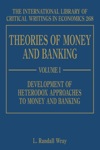
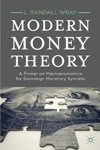
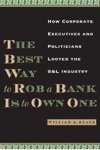


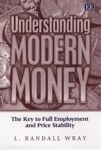
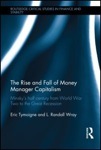

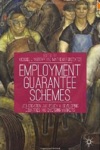

12 responses to “THE MODERN MONEY APPROACH TO SECTORAL BALANCES AND CAUSATION: MMP Blog #4 Responses”